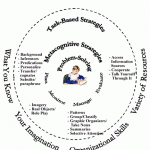Flickr, a social photo-sharing platform, is a fantastic tool for fostering creativity and language learning in the TESOL classroom. With over 10 billion photos shared by users worldwide, Flickr offers teachers and students access to a diverse visual library, allowing them to explore, create, and collaborate. Using photos as prompts can inspire language activities that engage students’ imaginations while improving their communication skills. In this article, we’ll explore how to use Flickr in new and experimental ways, while highlighting fun facts about the platform’s origins.
Why Use Flickr in TESOL Teaching?
Incorporating images into language learning has been shown to enhance student engagement and retention. Visual content taps into students’ creativity and helps them express ideas, describe scenes, and tell stories. Flickr, with its vast collection of user-generated photos, provides an excellent resource for language practice. Here’s why you should consider using Flickr in your TESOL classroom:
- Inspiration for Writing and Speaking: Photos can serve as prompts for creative writing, storytelling, or conversation practice.
- Cultural Exploration: Flickr allows students to explore images from around the world, making it an excellent resource for discussing cultural differences, customs, and traditions.
- Collaborative Learning: Flickr’s social aspect encourages students to share their own photos, comment on others’ work, and engage in discussions about the images.
Experimental Approaches to Teaching with Flickr
Here are some fresh and creative ways to incorporate Flickr into your lessons, pushing the boundaries of traditional language teaching.
1. Visual Storytelling Challenge
- How It Works: Choose a set of images from Flickr or have students find their own. Ask students to select three to five photos and create a narrative that connects them. They can write short stories, present the narrative verbally, or create captions for each image.
- Why It’s Effective: This activity encourages students to think creatively and practice linking ideas, using transition words, and expanding vocabulary.
- Experimental Twist: Have students create a multimedia presentation using their selected photos and add sound effects or music to match the tone of the story.
2. Cultural Comparisons through Photography
- How It Works: Ask students to explore Flickr for photos from a specific country or culture. They can compare these photos with images from their own culture and discuss similarities and differences.
- Why It’s Effective: This approach helps students build cultural awareness and gives them the language tools to discuss topics like traditions, celebrations, and daily life.
- Experimental Twist: Create a virtual photo exchange program where students share images of their own culture and write descriptive captions in English. Pair them with a class from another country to exchange photos and discuss their cultural insights.
3. Language through Photography Scavenger Hunt
- How It Works: Create a scavenger hunt where students must find specific types of images on Flickr (e.g., a photo of a cityscape, a traditional dish, or an animal). Students can write descriptions or use the images as conversation starters.
- Why It’s Effective: This activity encourages exploration and introduces new vocabulary related to objects, environments, and actions.
- Experimental Twist: Have students use their own smartphones to take photos around their neighborhood or school to create a personal scavenger hunt for their classmates. This blends real-world language practice with online exploration.
4. Flickr Group Discussions
- How It Works: Create a private Flickr group for your class where students can upload photos related to a topic (e.g., nature, architecture, or food). They must comment on each other’s photos in English, asking questions or providing constructive feedback.
- Why It’s Effective: This activity promotes collaborative learning and gives students opportunities to practice written communication in a fun and low-pressure environment.
- Experimental Twist: Organize a class-wide photo competition where students vote on their favorite photos, using descriptive language to justify their choices.
5. Exploring Emotions through Images
- How It Works: Ask students to choose photos that represent different emotions (e.g., happiness, sadness, anger). They then describe why the images evoke those emotions, using descriptive and emotive language.
- Why It’s Effective: This activity helps students connect visual cues with emotional vocabulary, improving their ability to express feelings and interpretations in English.
- Experimental Twist: Have students create their own emotional photo series, taking or selecting photos that represent a journey through different emotional states, narrating their stories along the way.
Fun Facts About Flickr’s Origins
- Born from a Game: Flickr was originally created in 2004 as a feature for an online multiplayer game called Game Neverending. The developers realized the photo-sharing component was more popular than the game itself, so they shifted focus to develop Flickr into the platform we know today.
- Yahoo’s Influence: Flickr gained rapid popularity, leading Yahoo to purchase the company in 2005. This acquisition helped Flickr become one of the largest photo-sharing platforms in the world, setting the stage for its role in the digital photography revolution.
- The “Flickr” Name: The quirky spelling of Flickr, without the “e,” reflects the fun and playful nature of its original purpose as part of a game. The name is also designed to evoke the feeling of flickering images, which mirrors the visual-based, snapshot-sharing experience the platform offers.
Tips for TESOL Teachers Using Flickr
- Provide Structure: While Flickr offers endless possibilities, students may need guidance to stay focused. Provide clear instructions and goals for each activity, such as specific writing tasks or language objectives.
- Encourage Creativity: Give students the freedom to explore their interests when choosing images, but encourage them to think critically about how those images connect to language goals.
- Focus on Descriptive Language: Flickr’s visual nature is perfect for practicing descriptive language. Encourage students to use adjectives, adverbs, and vivid language to bring the images to life in their descriptions or stories.
- Use as a Vocabulary Tool: Introduce new vocabulary by linking words to images. For example, show a photo of a bustling street market and ask students to describe the scene, using vocabulary related to food, people, and places.
Conclusion: Let Creativity Shine with Flickr
Flickr offers TESOL teachers a versatile platform to inspire creativity and engage students in visual learning. Through experimental approaches like visual storytelling, cultural comparisons, and scavenger hunts, students can improve their language skills while exploring the power of photography. With its rich history and vast user-generated content, Flickr is more than just a photo-sharing website—it’s a gateway to a world of creative language possibilities.
By incorporating Flickr into your teaching strategy, you can help students discover new ways to express themselves, connect with cultures, and develop a deeper understanding of the English language—all through the lens of photography.



